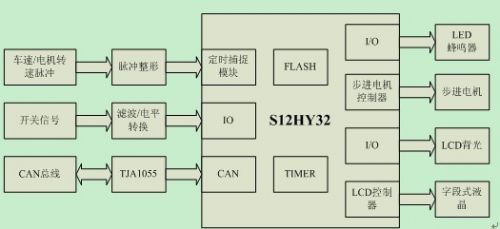introduction:
This article refers to the address: http://

Figure 1 dashboard hardware structure

Figure 2 vehicle speed signal detection circuit

Figure 3 software flow chart
Lightsaber could be come true, this light stick design we make the light soft and nice. One way light saber or two ways light saber is available. The light sick could be install on floor and wall, indoor and outdoor are available. Different color could be provided. Just make the life more and more interested.
Fiber Optic Glow Stick Light,Fiber Optic Glow Sticks,White Fiber Optic Wands,Fiber Optic Sticks
ZHONGSHAN G-LIGHTS LIGHTING CO., LTD. , https://www.glightsled.com